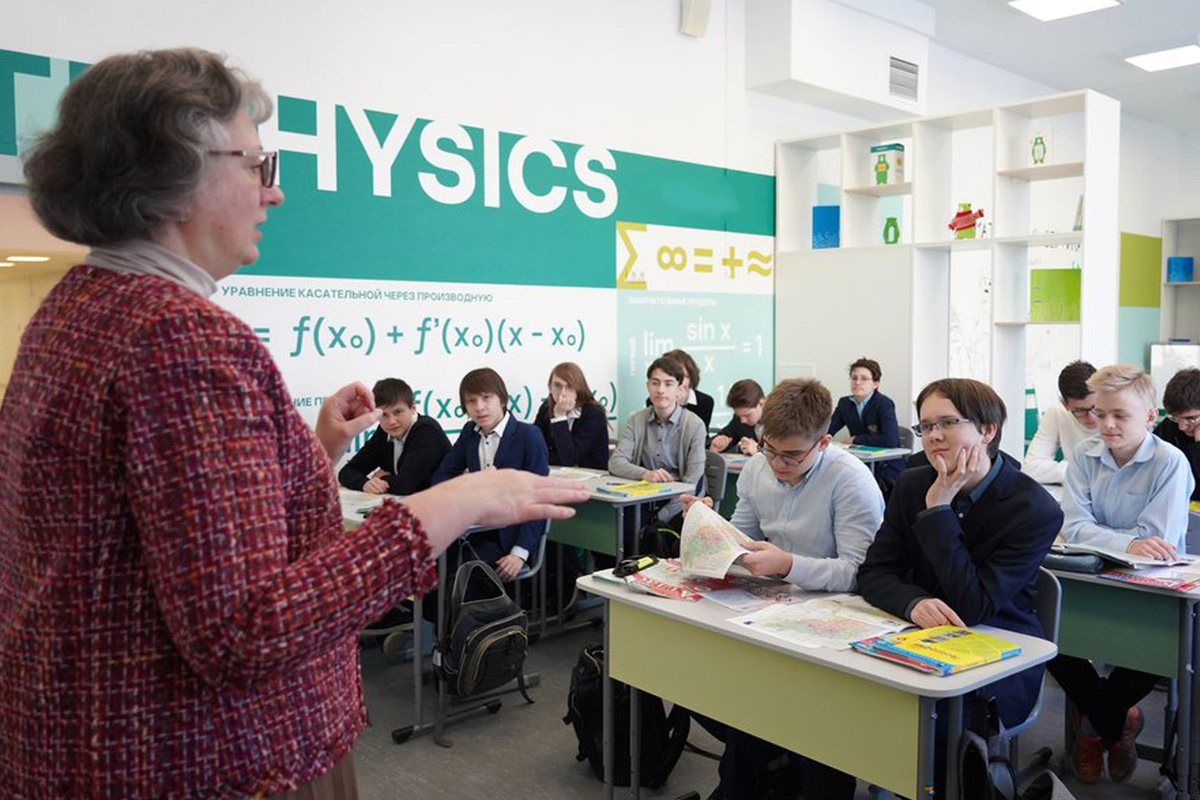Putin ordered to “deal with mathematicians” at school: what awaits students
[ad_1]

Improving the quality of teaching exact sciences and physics has reached the state level
The president called for improving the quality of teaching mathematics and natural sciences at school. And he instructed the government and the Council for Science and Education to “improve the quality of training of teachers teaching these subjects.” And also to deal with the “shortage of such teachers.” “MK” tried to predict what awaits students in algebra and chemistry lessons.
Putin instructed to approve a system of measures that would help cope with all these problems and improve the teaching of the queen of sciences and related disciplines by June 1. This plan must be coordinated with the Presidential Council of the Russian Federation for Science and Education.
Together, pundits and scientists intend to “develop and approve a comprehensive action plan to improve the quality of teaching mathematics and natural science subjects in the general education system,” the Kremlin reports.
In addition, by the beginning of the next academic year, an expanded list of “training areas and specialties of higher education” in pedagogical universities will be compiled. And in order to get into such an expanded enlarged group, the applicant will have to pass the “compulsory entrance test in mathematics.”
It is not yet very clear how the new methodology for training teachers of mathematics (there is usually also computer science), as well as physics, chemistry and biology (natural science disciplines) differs from the old one, except for the entrance exam. “MK” turned to pedagogical theory and an expert for clarification.
“Yes, of course, measures to improve the quality of teaching a particular subject exist, and they are based on practice, because pedagogy is an applied science,” says methodologist and teacher Anastasia Gordeeva. – I immediately agree with this: the professional development of teachers is always at the forefront. Moreover, professional communities organize regular trainings, seminars and advanced training courses for mathematics teachers. At a good level, and not for show.
Next come innovative teaching methods: interactive technologies (boards, displays, online platforms. Creation and payment for teachers at a good level of additional classes: tutoring, clubs and mathematics olympiads for interested students. Next is the involvement of parents, holding parent meetings and consultations on mathematics.And only lastly, testing and assessing students’ knowledge to analyze the effectiveness of the educational process.
In science subjects, after effective training and teacher commitment, equipment reigns supreme. Modern “stuffing” of classrooms and school laboratories with chemicals, demo models, and visual aids. And popular science lectures, field trips, and competitions play a huge role here. Kids love them, it’s a positive reinforcement.
And something else that is talked about a lot in connection with vocational and pre-vocational training: cooperation with research institutes, enterprises, universities. Internships, master classes from professors and scientists… priceless. And in last place in importance are again systematic tests, tests, or some other analysis of learning results.
Even though I am a mathematician myself, I can give an example from the natural sciences. There was an American physicist, Richard Feyman, actually a Nobel laureate, a serious scientist, who taught, of course, at the university. But sometimes he gave lectures to schoolchildren, who adored him. Many young minds became physicists thanks to Feyman.
But simply, in defiance of many others, he adored “live” illustrations. The same interactive, demonstrations, experiments. He was able to show the most complex physics concepts with ease and humor. Passion for physics and wit attracted more than a dozen boring treatises. Thus, Feynman became an example for a whole generation of physics teachers. Imitating him, they also began to use non-standard teaching methods and vivid experiments to attract students’ attention to physics and interest in learning.
[ad_2]
Source link








